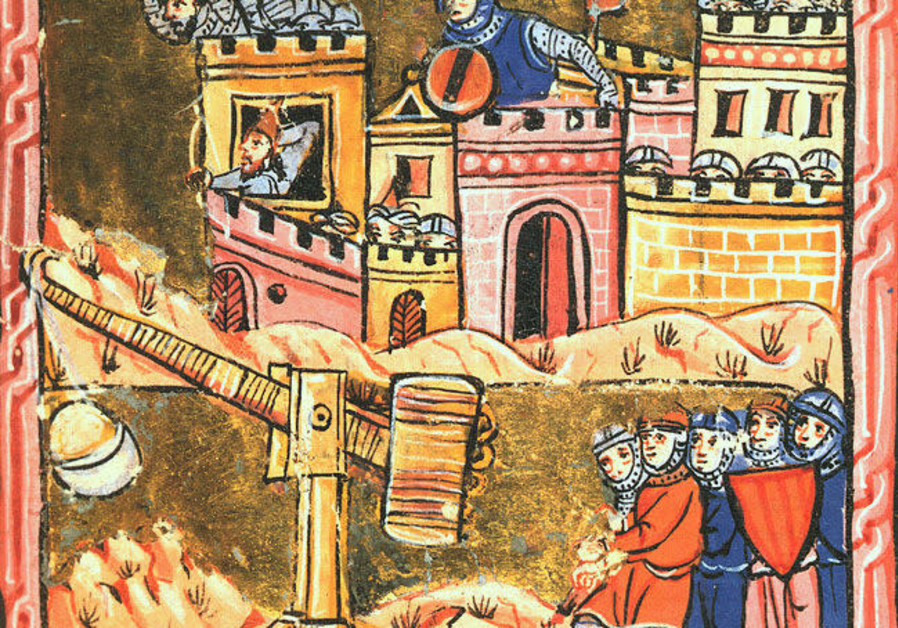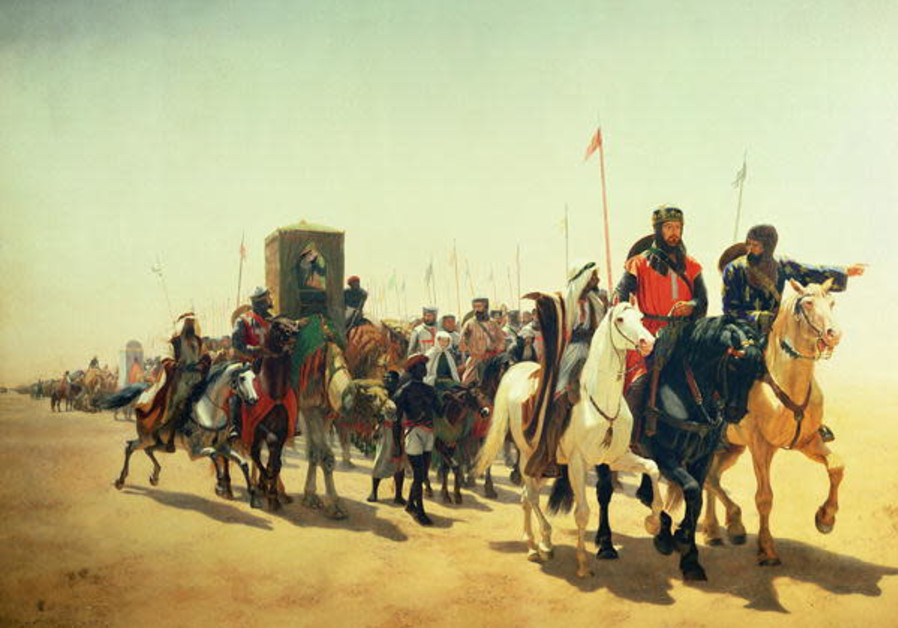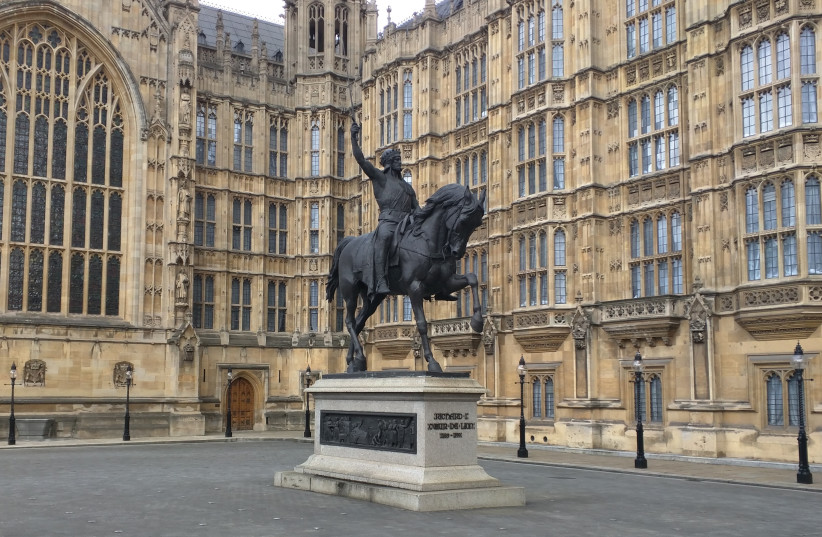On June 8, 1191, King Richard I of England arrived at the port of Acre in modern-day Israel to take part in the Siege of Acre during the Third Crusade.
Richard the Lionheard, England’s greatest king?
(photo credit: FLICKR/SPORST)
There are few English kings with cognomens – William the Conqueror and Edward the Confessor being two examples – but perhaps the most famous of all was Richard Cœur de Lion – the Lionheart.
The famed and feared warrior who ruled England for a decade was not the most popular of English kings in his own nation. During his reign, he spent perhaps as little as six months in his kingdom. Rather, it is his exploits as a Crusader, and his valiant battles against the Muslim Sultan Saladin, that have assured him his romantic place in history.
On June 8, 1191, King Richard I of England arrived at the port of Acre in modern-day Israel to take part in the Siege of Acre during the Third Crusade.
The Siege of Acre began in 1189 after most of Palestine, including Jerusalem, and the Levant had fallen to Saladin, Sultan of Egypt and Syria, resulting in Pope Gregory VIII issuing a papal bull that proposed a further Crusade to recapture Jerusalem from the Muslim forces.

The siege was originally started by King Guy of Jerusalem and Conrad of Montferrat, an Italian nobleman, and although several battles occurred in and around the city, attempted breaches of the city walls did not succeed. Throughout the winter of 1190-1191, Acre, with its Muslim garrison of 20,000 men, held strong as sickness and disease ravaged the Christian forces.
On December 31, 1190, yet another attempt to breach the walls of Acre failed, and on January 6, 1191, a partial collapse of the city walls led to Christian attempts to overrun the Muslim garrison that failed.
On February 13, 1191, Saladin succeeded in breaking through the Christian lines and reaching the city, so that he could replace his exhausted troops with a new garrison. But as he waited out the winter, Saladin’s chance to decimate the Christian forces slipped away. More Christian troops arrived from all over Europe, including the legendary King of England (after a brief stopover in which he conquered Cyprus.)
Richard arrived with a force of 8,000 men and joined up with King Philip II of France. Philip was eager to attack the Muslim forces as soon as possible but Richard, his troops weakened by travel and illness, wished to wait.
Philip insisted on launching an attack. On June 17, he and his troops fired on Acre’s wall with ballistas and engines. The siege machines broke through the walls of Acre, but every new breach led to an attack from Saladin’s army on the outside, giving the garrison inside Acre every opportunity to repair the damage while the Christians were distracted.
On July 2, Richard deployed his own siege engines, including two enormous trebuchets named “God’s Own Catapult” and “Bad Neighbor.”
On July 4, the city surrendered to Richard, but he rejected the conditions, and no reinforcing attack was offered this time by Saladin. On July 12, 1191, the city once more offered terms of surrender to the Crusaders; this time, they accepted the offer.
The Christians then entered the city as conquerors and the Muslim garrison was taken into captivity. Conrad of Montferrat raised the banners of the Kingdom of Jerusalem and of France, England and the Duchy of Austria over the city. 20,000 Muslim soldiers of the garrison died during the siege.
After unsuccessful negotiations between Saladin and Richard, massacres of prisoners took place on both sides and on August 22, King Richard and his army left the city, heading south.

Richard captured Jaffa on September 10, and continued his march towards the holy grail of Jerusalem, but he was ultimately unable to realize his goal of recapturing Christendom’s most valuable prize.
Meanwhile, Richard was informed that his brother, known as John Lackland was attempting to take control of England, so Richard hastily arranged for a treaty with Saladin, and the Third Crusade came to an end when Richard left for England on October 9, 1192.
Due to several factors, including illness, the two legendary warriors never actually met.
Richard’s capture and demise have also entered into legend.
He was allegedly captured passing incognito through Vienna dressed as a poor commoner, when his monarchical signet ring caused him to be recognized. Captured by Leopold V, Duke of Austria, he was handed over to Emperor Henry VI. The 35,000 kg of silver the English paid as ransom nearly bankrupted the country and had repercussions on the nation for generations.
However, Richard’s romanticized heroics, and fabled exploits guaranteed that he is one of England’s more memorable kings.
%


